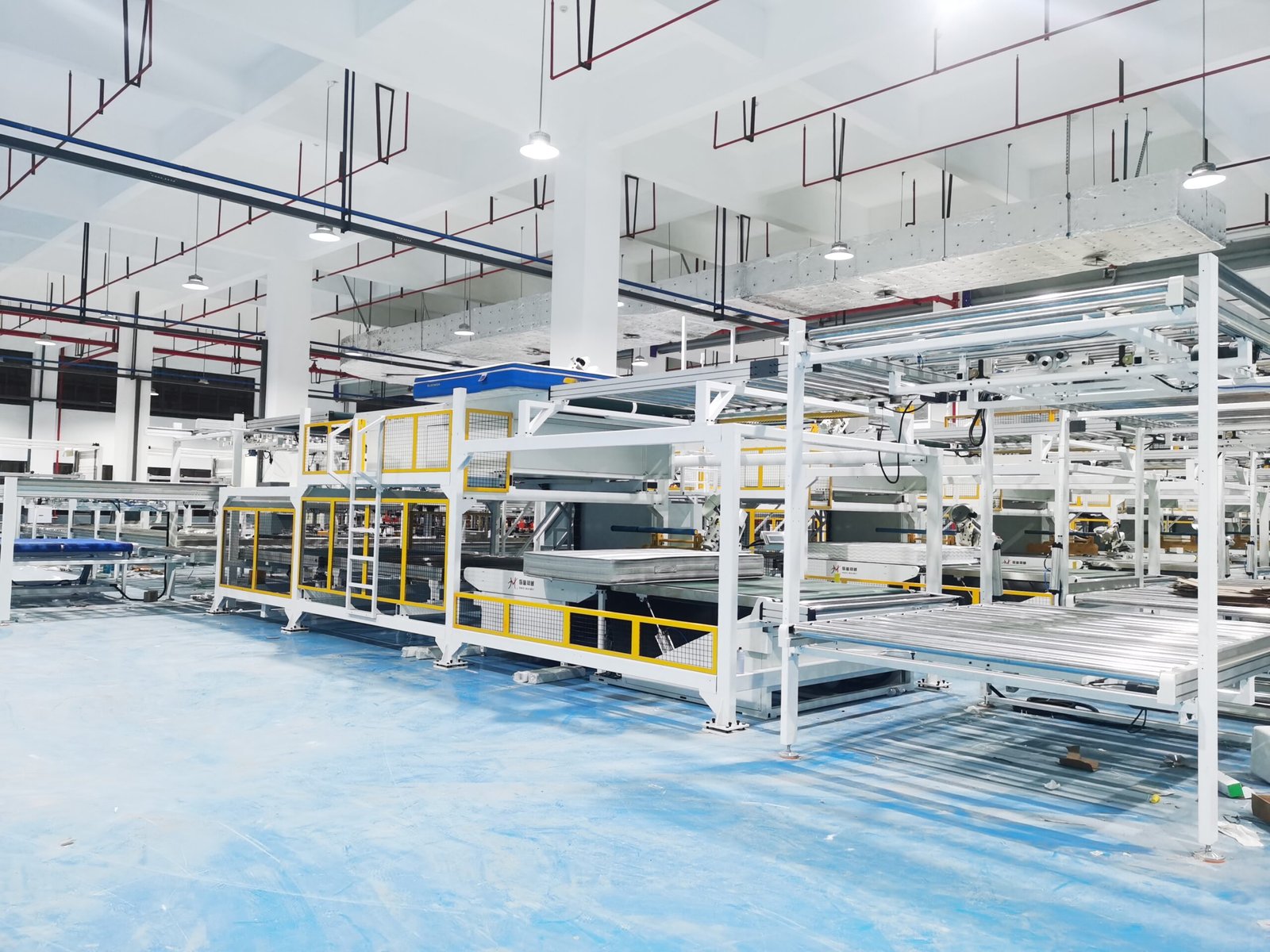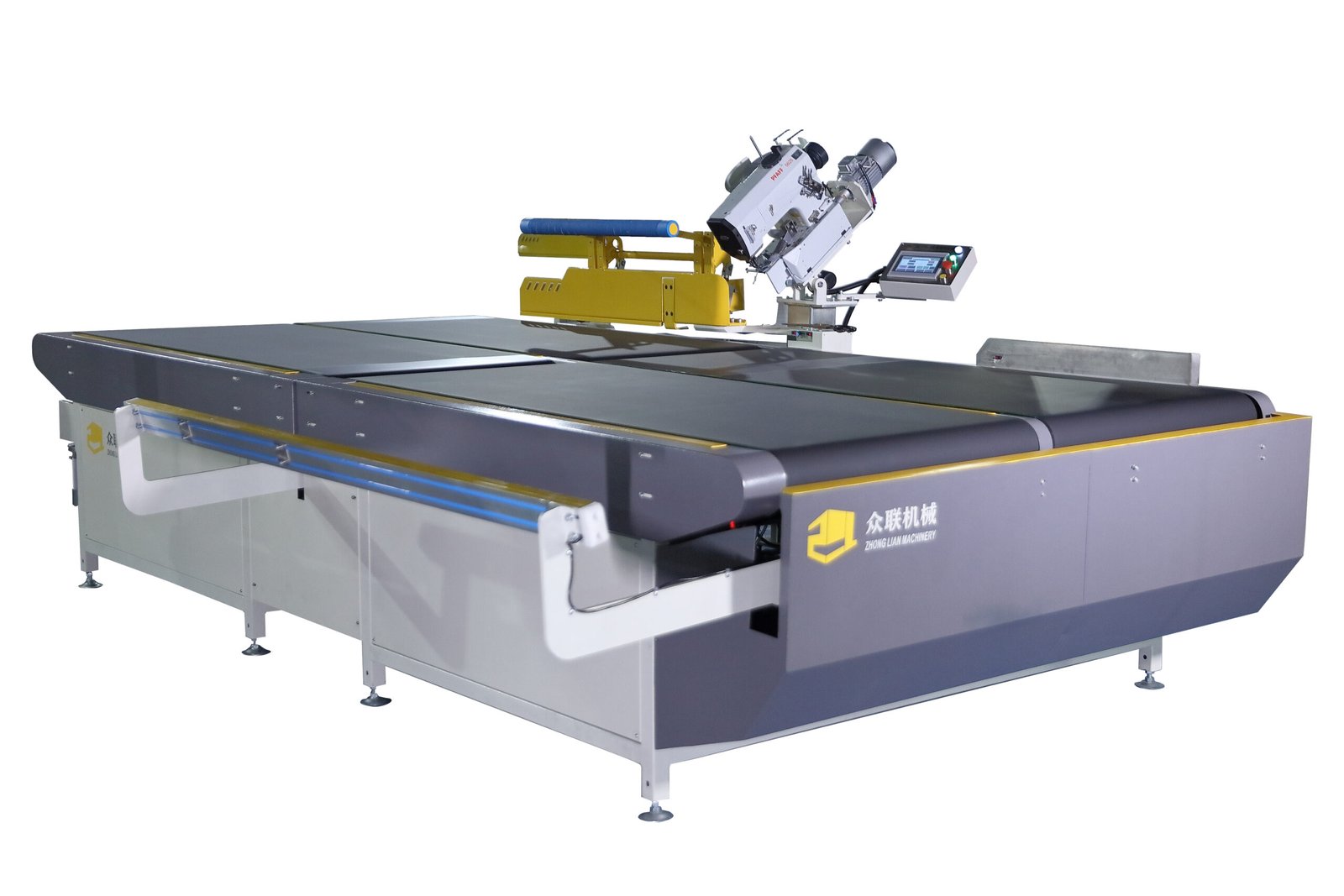Mattress factories still using manual sewing methods face bottlenecks in speed, quality, and consistency.
Advanced sewing technology transforms mattress production by increasing speed, improving consistency, reducing labor, and enabling custom designs at scale.

This article explores how sewing technology evolved, what innovations exist today, and how they impact productivity, product quality, customization, and sustainability in mattress manufacturing.
How Has Sewing Technology Evolved in Mattress Manufacturing?
Manual stitching once limited output and increased defects. It’s no longer enough in today’s competitive market.
The evolution of sewing technology has moved from hand-stitching to mechanical, electronic, and now fully automated systems powered by AI and robotics.
From Manual to Mechanical
Early mattress factories relied on hand stitching. While accurate, it was slow and inconsistent. The invention of mechanical sewing machines in the 1800s was a turning point, improving both speed and uniformity.
The Rise of Electronics and Automation
By the late 20th century, electronic sewing machines entered the scene. These allowed:
- Adjustable stitch patterns
- Speed control
- Basic automation
This paved the way for today’s fully computerized and sensor-driven systems.
Current Technological Milestones
Today’s advanced machines feature:
| Milestone | Description |
|---|---|
| PLC Systems | Programmable control over every stitch |
| Servo Motors | Silent, high-precision movement |
| Automated Quilting Heads | Consistent decorative patterns |
| Integrated Vision Systems | Real-time error detection and correction |
| Robotic Arms | Fabric handling without human intervention |
This evolution has completely reshaped how mattresses are made, removing repetitive tasks and allowing scalable production.
What Innovations Define Modern Mattress Sewing Machines?
Not all machines are created equal—some are smart, fast, and nearly self-sufficient.
Modern mattress sewing machines are defined by automation, real-time monitoring, computerized programming, and multi-material handling capabilities.

Key Innovations in Detail
1. Computerized Stitch Programming
Operators can store hundreds of preset patterns. Machines switch between designs in seconds with zero manual setup.
2. Auto-Threading & Cutting
Machines handle threads autonomously. No need to stop and trim threads manually, saving time and improving seam quality.
3. Material Sensors
These detect fabric thickness and tension to adjust stitch length, pressure, and speed instantly.
4. Vision & AI-Based Detection
Camera systems can detect skipped stitches or misaligned seams in real time and automatically correct them.
| Innovation | Impact on Factory |
|---|---|
| Auto Thread Cutter | Speeds up process, reduces rework |
| Stitch Memory | Consistency across batches |
| Fabric Sensor | Avoids broken needles and tension errors |
| AI Quality Control | Near-zero defective units |
These innovations create a system that is faster, smarter, and nearly error-proof.
How Does Advanced Sewing Technology Boost Productivity?
Time is money in manufacturing. Every minute counts—especially at scale.
Automation allows for uninterrupted workflows, rapid production, and less reliance on human labor.

3X Faster Output
Where traditional machines stitch 50–80 units/day, advanced systems can exceed 200/day.
24/7 Operation with Minimal Downtime
With predictive maintenance alerts and built-in diagnostics, factories keep running longer without failure.
Reduced Operator Dependence
One operator can oversee 2–3 machines. This optimizes workforce allocation and reduces training costs.
Output Comparison
| Machine Type | Daily Output | Labor Required | Downtime Risk |
|---|---|---|---|
| Manual | 40–60 units | High | High |
| Semi-Auto | 80–100 units | Medium | Moderate |
| Full-Auto | 150–220 units | Low | Very Low |
Increased productivity leads to faster order delivery and more competitive pricing.
How Does It Improve Mattress Quality and Consistency?
Quality control used to rely on human eyes. That’s no longer sustainable.
Advanced machines produce consistent seams, strong edge support, and flawless quilt patterns—every single time.

Zero-Tolerance Accuracy
Computerized stitchers maintain even spacing and pressure across every inch of the mattress surface.
Improved Structural Strength
Tighter seams prevent sagging, shifting, or unraveling over time.
Error Detection Systems
Built-in AI flags defects before the mattress leaves the production line.
| Quality Parameter | Manual Method | Advanced Sewing |
|---|---|---|
| Stitch Precision | Medium | High |
| Seam Strength | Inconsistent | Consistent |
| Rework Ratio | High | Low |
| Defect Detection | Manual Check | Automatic Alerts |
The result is a mattress that’s built to last—and returns that drop by over 40%.
How Does It Support Customization?
Mass production used to mean "one size fits all." Not anymore.
Today’s sewing machines support on-demand customization—without affecting output speed.
SKU Flexibility
Switch between:
- Firm and soft layers
- Various fabric types
- Branded or pattern-stitched edges
All without resetting the machine.
Consumer Design Input
Some brands allow customers to select stitch designs or panel patterns. Advanced machines can stitch these designs instantly with stored files.
| Customization Element | Enabled by Technology |
|---|---|
| Embroidery Patterns | Programmable Stitch Heads |
| Logo Embedding | Multi-layer Stitching |
| Size Adjustments | Dynamic Frame Settings |
This flexibility lets manufacturers serve premium markets and stand out from mass-market brands.
How Does It Help With Cost and Sustainability?
Better tech doesn’t just improve quality—it also saves money and helps the planet.
Automated sewing reduces labor, cuts material waste, and optimizes power use.
Cost Reduction Factors
- Lower labor demand = 30–50% savings
- Less fabric waste = up to 20% cut savings
- Energy-efficient motors = lower electricity costs
Sustainability Boost
- Fewer rejected units = less landfill waste
- Optimal fabric cutting = reduced resource use
- Longer-lasting products = fewer replacements needed
| Metric | Manual Process | Advanced Tech |
|---|---|---|
| Labor Cost / 1000 units | $2,500 | $1,400 |
| Waste Material (%) | 18% | 5% |
| Return/Defect Rate | 8–10% | 2% |
Switching to advanced sewing isn’t just smart—it’s green.
Conclusion
Advanced sewing technology in mattress manufacturing improves speed, reduces defects, cuts costs, and opens up custom design options—all while being more sustainable.
Get in touch with us for tailored solutions! We look forward to collaborating with you and shaping a brighter future together!
📞 | WhatsApp:+86 15220512074
📧E-mail:zhongliantec@gmail.com
Web | Link:mattressmachineryzl.com
